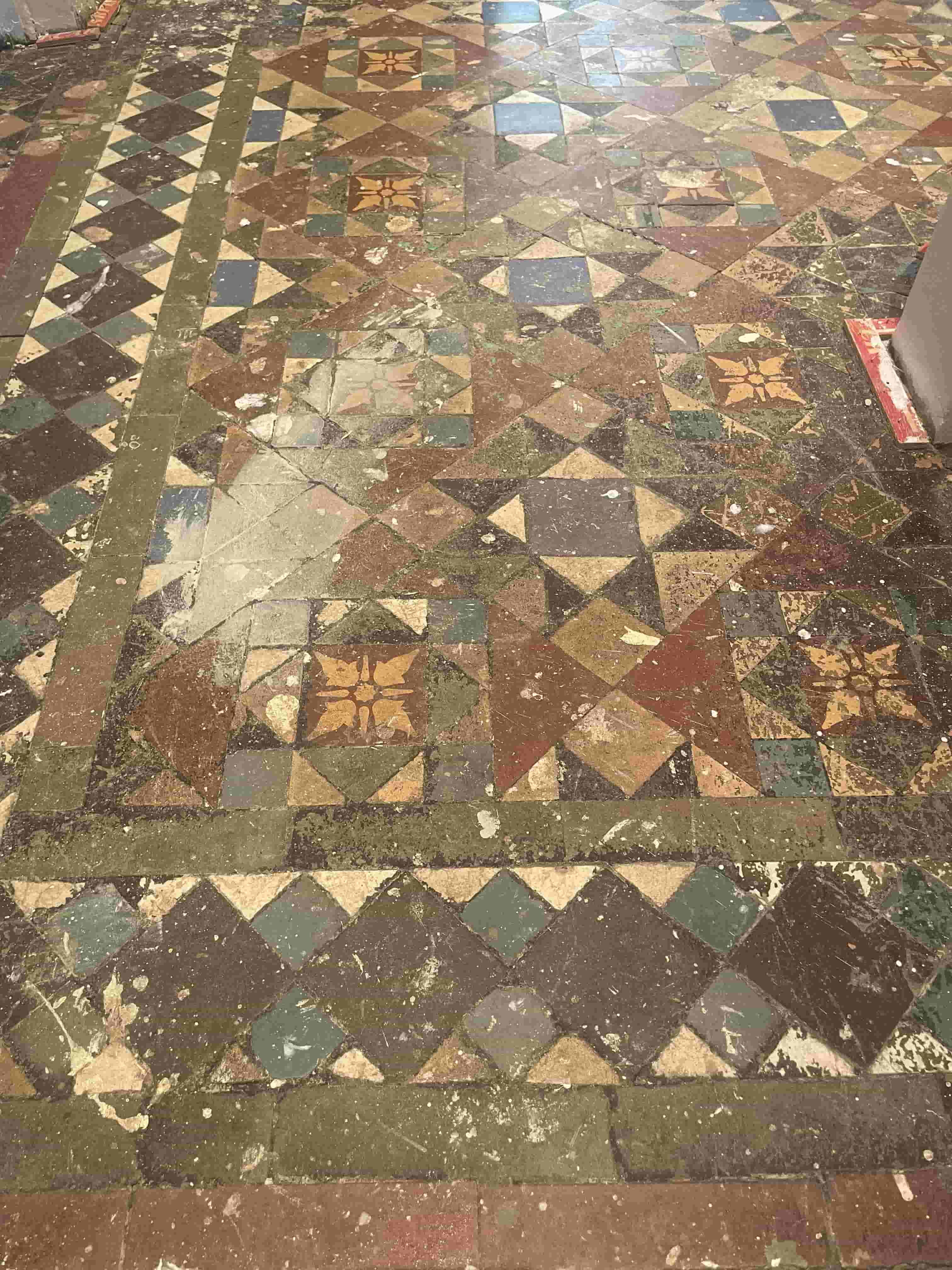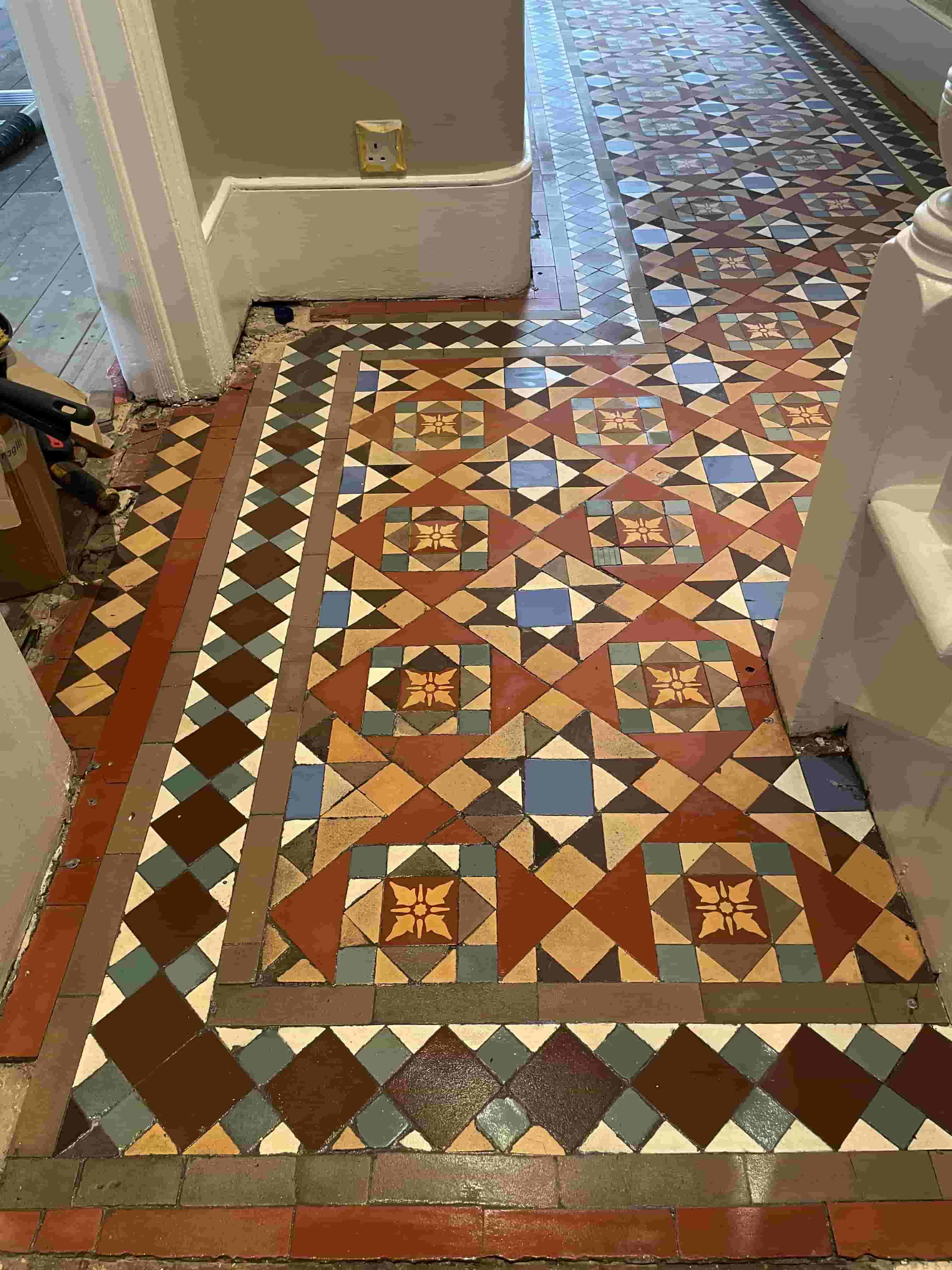I received a request to quote for the restoration of this Victorian tiled floor in the hallway of a property in Fulham which as you can see from the photographs was in a very poor condition.

I visited the property to survey the floor and could see that except for a few loose tiles it was in good physical condition. From experience I knew it would respond well to a deep clean and seal so I carried out a test clean on a small area to demonstrate its potential. The tiles came up well and my client was satisfied it would be worthwhile to have it restored.
 |
 |
When you have period features such as this floor in a property it is a shame not to make the most of them, they are sought after and will increase its value. Having agreed my quote, we arranged to carry out the work the following week.
Cleaning a Victorian Tiled Hallway Floor
To get all the dirt out of the pores of the tiles I first applied a strong dilution of Tile Doctor Remove and Go and after leaving it to soak in for ten minutes was scrubbed in with a black pad. I also used a steam cleaner during this process to help lift the dirt out of the pores. From what I could tell the tiles had a variety of contaminants including paint, plaster, cement, and dirt. Luckily Tile Doctor Remove and Go can handle all of these. I had to repeat the process on the stubborn stains and then removed all the slurry and dirt using a wet vacuum.
I then moved onto the loose tiles which needed to have the old adhesive removed from the tile and the base. The original tiles were then cleaned up by hand before new rapid setting adhesive was applied to secure them back into the floor.
Once the loose tiles had set, I moved onto the next step of giving the floor an Acid Rinse using Tile Doctor Acid Gel. This cleans up the tiles further by removing old grout smears and dissolving efflorescent salts in the floor. This is a common in properties of this age which don’t have a damp proof membrane to stop moisture rising through the tile. This process also neutralises the pH level of the floor after the use of strong alkaline cleaning products like Tile Doctor Remove and Go. The floor was rinsed again afterwards, and the soiling extracted with a wet vacuum before leaving it to dry off overnight.
Sealing a Victorian Tiled Hallway Floor
The next day the moisture levels of the tiles were checked with a damp meter to ensure they were dry enough to be sealed. The readings were fine, so I was able to apply a couple of coats of Tile Doctor Colour Grow which is a breathable colour enhancing sealer. This is a super durable product which will give great protection to the floor, especially when it is in a high traffic area such as a hallway.
 |
 |
My client was amazed with the transformation and said he never expected it to come out as good as it did. I must admit considering the state it was into to start with I can understand his expectations mustn’t have been that high.

For aftercare I recommended the use of Tile Doctor Neutral Tile Cleaner to maintain the floor, this is a pH neutral product which will ensure the longevity of the newly applied sealer and is mild enough to use every day. Its supplied as a concentrate so you only need a small amount of cleaning fluid to clean the floor and so a one litre bottle will last a while.


Efflorescence can be a real problem with old floors that have no Damp Proof Membrane or have seen water damage. It manifests itself as white salts which are deposited on the surface of the tile as moisture evaporates. For more information about and how to treat it please visit https://www.tiledoctor.co.uk/shop/custom.aspx/efflorescence/10/